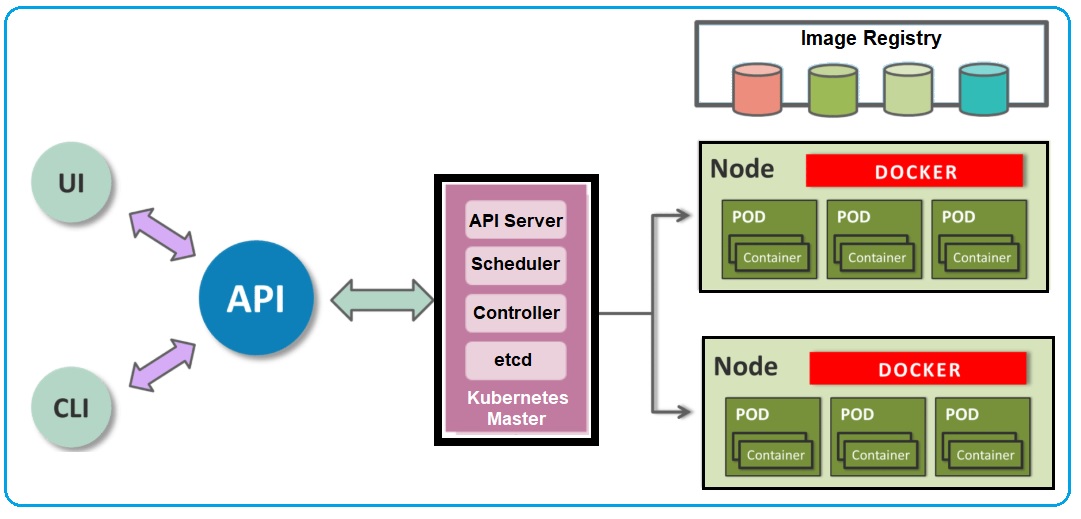

- #WHAT IS KUBERNETES VS DOCKER FOR FREE#
- #WHAT IS KUBERNETES VS DOCKER SOFTWARE#
- #WHAT IS KUBERNETES VS DOCKER CODE#
Docker Swarm is based on the concept of Pods which are scheduling units containing multiple containers in the Kubernetes ecosystem and are shared in a cluster of nodes automatically if available.Kubernetes, on the other hand, is an orchestration tool that follows a client-server architecture, but unlike Docker, it’s not a complete solution and uses custom plugins to extend its functionality.This makes integration with tools that already support the Docker API easy. Swarm has a simple architecture which clusters together multiple Docker hosts and serves the standard Docker API on top of that cluster. Docker uses its very own native clustering solution for Docker containers called Docker Swarm, which is a cluster of Docker hosts onto which you can deploy services.Kubernetes comes to picture when you need to work with a large number of containers across multiple machines. Docker is an enterprise-ready container platform for building, configuring and distributing Docker containers, whereas Kubernetes is an ecosystem for managing a cluster of Docker containers known as Pods.However, both are fundamentally very different technologies that work in harmony. Both Kubernetes and Docker are comprehensive de-facto solutions to effectively and efficiently automate deployment and management of container-based applications allowing developers to package an application with all the parts they need.Technology involved in Kubernetes and Docker.
#WHAT IS KUBERNETES VS DOCKER CODE#
It is lightweight and incredibly simple and is designed to enhance consistency by making sure the environment in which the developers write code matches the environment into which the applications are deployed. In simple terms, Docker is a technology for Linux that allows system developers to package an application with all the parts it requires.
#WHAT IS KUBERNETES VS DOCKER FOR FREE#
Its source code is available for free for everyone on GitHub.ĭocker adds an application development engine on top of a virtualized container execution environment. It was released to the public as open source in 2013. Docker was designed as the internal tool in the platform as a service company, dotCloud.
#WHAT IS KUBERNETES VS DOCKER SOFTWARE#
It is the software for managing a cluster of Docker containers.ĭocker is an enterprise-ready container platform and open-source engine that automates the deployment of applications into containers. The Kubernetes orchestration includes scheduling, distributing workload, and scaling. One can easily run containerized applications across multiple clustered nodes using Kubernetes. Kubernetes revolutionized the way DevOps and IT infrastructure are handled. Search giant Google open-sourced the Kubernetes project in 2014, but it later joined the Cloud Native Computing Foundation (CNCF) and became the undisputed leader in the field of container-based applications.

It is one of the most popular orchestration platforms in the world for automating deployment and management of container-based applications at both small and large scales. Kubernetes is an open-source project and ecosystem that automates the deployment, scaling and management of containerized applications. We intend to provide the same through this article and help you understand the difference between the two. To better run a modern cloud infrastructure, a better understanding of both Docker and Kubernetes is essential. The idea behind Docker was to pack an application with all the dependencies it needs into a single, standardized unit for the deployment. Since then businesses started using containers to package legacy applications in order to simplify deployment and increase portability. It started in 2013 with the initial release of the Docker container engine which would allow users to conveniently and effectively package software into small, reusable environments known as containers. Since then organizations have started to focus on things that actually matter such as containerization.

However, to keep up with the current pace, organizations are now migrating their infrastructure to cloud services such as Google Computer, Azure and AWS in an effort to not only save time but cut overhead costs. It would seem impossible to run critical applications outside the boundary of the corporate data center few years back.

The rise of cloud computing, automation, virtualization has fundamentally changed how developers, system administrators, and businesses manage infrastructure as a whole. The IT industry has seen dramatic shifts over the past few years in ways in which software applications are developed and deployed.


 0 kommentar(er)
0 kommentar(er)
